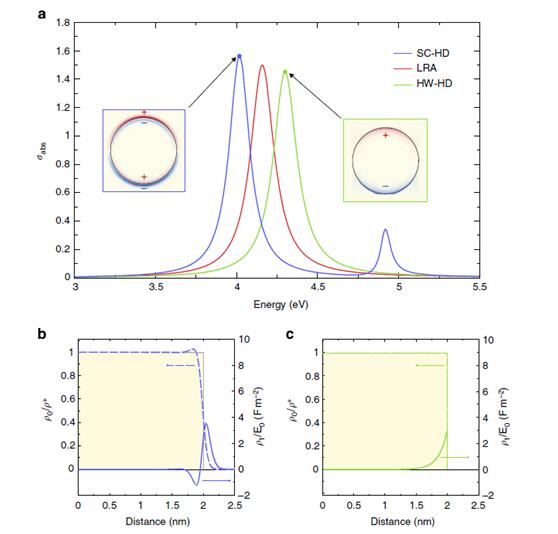On May 27, the latest nanoplasmonics research of the team led by Xu Hongxing, Professor at the School of Physics and Technology and the Institute for Advanced Studies of Wuhan University, was published in Nature Commun, the supplement of the world-renown scientific magazine, Nature.
The research team, with its paper Resonance shifts and spill-out effects in self-consistent hydrodynamic nanoplasmonics, has made noteworthy breakthrough in the modelling of nanoplasmonics non-local effect theory, and laid solid foundation for the quantitative description of nanoplasmonics within nano and sub-nano systems. The Lead Author of this paper is Giuseppe Toscano, an Italian Post-doctor, while Wuhan University attains the honor of the Lead Signing Unit.
Nanoplasmonics enjoys promising application in solar battery, nano-optical equipment and many other fields. Previous researches into nanoplasmonics hinged crucially on classic electromagnet theory and traditional hydrodynamic model, which can neither explain a range of related effects nor achieve the required accuracy. In order to conquer this barrier, Giuseppe Toscano and his team put forward a self-consistent hydrodynamic model to analyze the resonance of nanoplasmonics through iterative computation of electric charges and magnet density distribution, expounding the resonance shift of nanoplasmonics. In addition, the self-consistent model has in itself included the spill-over effect of electrons, which ameliorates the hit rate of prediction.
It is widely acknowledged that Professor Xu has been a trail-blazer in nanoplasmonics starting with his research for the doctoral dissertation. Two of Professor Xu’s most prominent papers received over 1,300 and 900 quotations respectively, making him indisputably one of the most quoted scholars in this area. After joining Wuhan University, he has published a series of papers on authoritative magazines such as PNAS and Nano Letters, as well as fostering a research team including international scholars and postdoctoral researchers. At present, the team mainly focuses on plasmonic catalysis and surface enhanced spectroscopy.

Optical Effect of Cylindrical Nanowire (Radius = 2 nm)
(Rewritten by Jingyi Zhang,edited by Diana & Sijia Hu)


